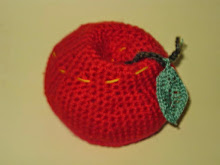
The important message is - it looks like world population is doing a flip!
Click photo to enlarge to full page size, and click back to return to text.
.........
Some say that the megacities will save us and that the population of the world will stabilise at 9 billion in 2050
......................
PS. 27/8/2010 My friend tells me that the population graph is not clear.
The straight line to northeast is the 2, 4, 8, 16, 32 etc; this is ancestor line
.....................
It intersects the population line and that is the point of maximum number of ancestors possible for one person. The common ancestors must be part of merging sooner in time, then merging to form limbs and trunk of human family tree(s).
........................................
Another important message is in http://www.earthmothercrying.org/
Please especially read Chief Oren Lyon's lecture which he gave
at the 24th Schumacher Lectures in 2004.
Click on the ice is melting photo:
We need to discuss matters that are important.
Remember that the ice is melting.
There may be a reason why there are so many of us on earth at this time.
Click on Medicine wheel photo:
Message that the earth could heal instantly if every one on earth would put away their toys of war and join together in peace.
..........................conundrum.............
Please check out on Yahoo! Answers "How many ancestors did you have 1000 years ago?"
Joseph T. Chang, Professor of Statistics at Yale University has given thought in Science News Sept 30, 2004, regarding our most recent common ancestors.

When I change the parameters of the x axis, then the increase does not look so dramatic.
 Sorry this is sideways. How to fix this I don't know. Internet has a mind of its own.
Sorry this is sideways. How to fix this I don't know. Internet has a mind of its own.
I would be glad of any comments , please send email to tmvanam@gmail.com
PS 27/8/2010 There was a quote from an article on collapsing societies, eg the Anasazi, ie "The rich reserve for themselves the right to die last". This is a cue to live symbiotically and sustainably on planet earth.
PS 27/8/2010 There was a quote from an article on collapsing societies, eg the Anasazi, ie "The rich reserve for themselves the right to die last". This is a cue to live symbiotically and sustainably on planet earth.













 1......The Original Pattern is used to create the hyperbolic fan shape:
1......The Original Pattern is used to create the hyperbolic fan shape:














